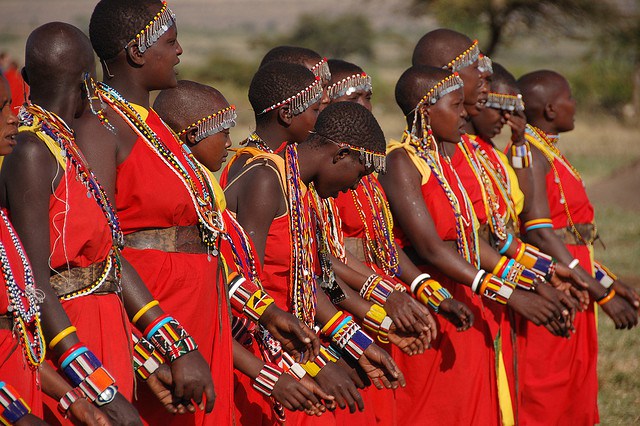It’s just before sunset, the time of day when Maasai herdsman Josphat Ole Tonkei would have been counting his herd of cows after hours in the grazing fields, a few years ago.
Today Tonkei must wait until darkness to perform the check. The routes to grazing fields and water points have been blocked and he has to take a long, alternative route to reach his “Manyatta”, or homestead, where he counts his herd.
An area that for years provided grazing ground for his cows has been built over with commercial properties and gated communities, leaving him and other herdsmen with no choice but to walk long distances in search of pasture and water.
He is not sure how pastoralists’ communal grazing land has passed into the hands of private developers.
“We don’t know who sells our land to private developers. We only realise it has been sold when we see them erecting concrete fences and putting up structures,” Tonkei said.
Tonkei is among Maasai herdsmen reeling from the impact of rapid urbanisation that is encroaching into the plains of Kitengela town, around 30 km (18 miles) south of the capital Nairobi.
BALLOONING URBAN DEVELOPMENT
As in many other East African countries, the rapid growth of urban areas has taken a toll on the ancestral lands of pastoralists, where much of the new development is taking place.
Kenya has undergone unprecedented urban growth, which has led to an increased demand for land, further exacerbated by a growing middle class population.

REUTERS/Thomas Mukoya
At the time of independence, in 1964, about 8.5 percent of Kenyans resided in urban areas, according to United Nations data. This figure had risen to 16.7 percent by 1990 and by 2015, one in four Kenyans lived in urban areas.
The U.N. projects that by 2030 almost a third of Kenyans will live in urban areas, rising to 43.9 percent by 2050.
A push by middle class Kenyans to own property amid soaring land prices has led financial institutions, developers and speculators to target land in satellite towns around Nairobi, experts said.
In Kajiado County, where Tonkei lives, land has become a contentious issue as fraudsters have duped thousands of buyers into purchasing Maasai communal land, which is then converted into private land, local people said.
The influx of outsiders and increase in buildings on land that belongs to indigenous communities have caused tension with the Maasai pastoralists, who say urbanisation has led to evictions, forced displacement and increased violence.
Tonkei said land developers conspire with unscrupulous Maasai elites and some politicians to convert communal land into private land, aided by county land registry officials.
The land is divided into small portions, with some of it sold on to people to develop residential and commercial properties, and the rest held for the purpose of speculation.
“The conflict caused by urbanisation is not just because of grazing for animals … the most painful part is taking land through fraud,” said Letuati Nackson Ole Umash, chairman of Lerelo Emaa, a community-based organisation that advocates for the rights of Maasai.
Current models of urbanisation pay no attention to human rights, resulting in gross inequalities, social exclusion and violence, said Umash, adding that zoning should be compulsory to ensure fields are reserved for grazing.
“If land developers do not factor in human rights, our way of life will completely change as we may be forced to turn to crop and other farming – a livelihood that will not be sustainable for livestock farmers,” he told the Thomson Reuters Foundation.
LACK OF NATIONAL POLICY
According to Joan Kagwanja, chief at the Land Policy Initiative of the African Union Commission (AUC), Kenya has been operating without a national policy framework for urban development.
Land governance issues remain complex despite planning and local government laws that guide urban planning and management in Kenya, she said.
“These (laws) did not provide the appropriate framework and guidelines to manage Kenyan’s rapid urbanisation in a manner that harnessed opportunities and managed the risks and challenges of cities and towns,” she said.
“What we need … is to maximise benefits for the Maasai community while mitigating the risks such as loss of their culture, rights, and livelihoods and minimising the negative or unintended consequences of urbanisation,” she said.
Potential risks for communities in semi-urban and rural areas near cities were often disregarded when weighing the pros and cons of urbanisation, resulting in poorly conceived plans, she added.
But there was some progress on land governance, she said, citing the proposed National Urban Development Policy (NUDP) as an example for a more holistic approach to planning that includes participation of local communities.
The government also took action in April when Cabinet Secretary for Land Jocob Kaimenyi dissolved land control boards – which he said had been compromised by land developers – in a bid to curb irregular land allocations and fraudulent sales.
(Reporting by Shadrack Kavilu; Editing by Jo Griffin and Astrid Zweynert).




